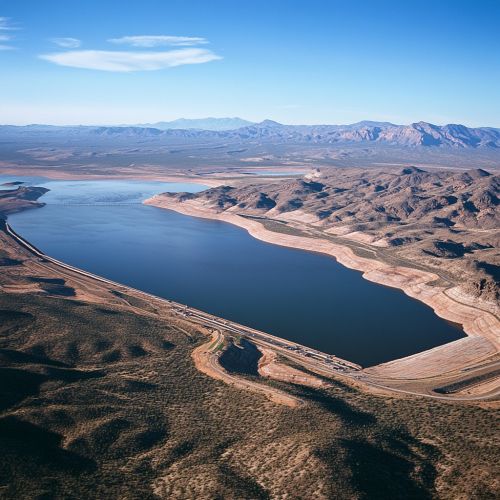Water Management in the Southwestern United States
Overview
Water management in the Southwestern United States is a complex and multifaceted issue that involves the allocation, distribution, and conservation of water resources in a region characterized by arid and semi-arid climates. This article delves into the historical context, current practices, challenges, and future prospects of water management in this critical area.
Historical Context
The history of water management in the Southwestern United States dates back to indigenous populations who developed sophisticated irrigation systems to support agriculture in arid environments. The arrival of European settlers in the 16th and 17th centuries brought new water management techniques, including the construction of acequias (community-operated watercourses) and dams.
Indigenous Water Management
Indigenous tribes such as the Hohokam in present-day Arizona constructed extensive canal systems to irrigate their crops. These early irrigation techniques laid the groundwork for future water management practices in the region.
Spanish and Mexican Influence
The Spanish colonization introduced the acequia system, which was later adopted and expanded by Mexican settlers. These community-managed irrigation channels were crucial for agricultural development and are still in use today in some areas.
American Expansion
The 19th-century westward expansion of the United States brought significant changes to water management practices. The construction of large-scale irrigation projects, such as the Central Arizona Project and the All-American Canal, transformed the landscape and enabled large-scale agriculture and urban development.
Current Water Management Practices
Water management in the Southwestern United States today involves a combination of federal, state, and local agencies, as well as private entities. The primary focus is on the allocation and conservation of water resources to meet the needs of agriculture, industry, and urban populations.
Major Water Sources
The Colorado River is the most significant water source in the region, supplying water to seven states and Mexico. Other important sources include the Rio Grande, groundwater aquifers, and various reservoirs and lakes.
Water Allocation
Water allocation is governed by a complex web of laws, treaties, and agreements. The Colorado River Compact of 1922 is a key document that divides the river's water among the seven basin states. The Law of the River, a collection of legal agreements, further regulates water distribution.
Conservation Efforts
Conservation is a critical component of water management in the region. Techniques such as xeriscaping, drip irrigation, and the use of reclaimed water are widely employed to reduce water consumption. Public awareness campaigns and incentives for water-saving technologies also play a significant role.
Challenges
The Southwestern United States faces numerous challenges in managing its water resources, including population growth, climate change, and legal disputes.
Population Growth
Rapid population growth in cities like Phoenix, Las Vegas, and Los Angeles has increased the demand for water. Urban sprawl and the development of new residential and commercial areas put additional strain on already limited water supplies.
Climate Change
Climate change poses a significant threat to water resources in the region. Increased temperatures, prolonged droughts, and reduced snowpack in the Rocky Mountains, which feeds the Colorado River, are all contributing factors. These changes necessitate adaptive management strategies to ensure a sustainable water supply.
Legal Disputes
Legal disputes over water rights are common in the Southwestern United States. Conflicts arise between states, between agricultural and urban users, and between the United States and Mexico. Resolving these disputes often requires lengthy legal battles and complex negotiations.
Future Prospects
The future of water management in the Southwestern United States will depend on innovative solutions, technological advancements, and cooperative efforts among stakeholders.
Technological Innovations
Advancements in technology offer promising solutions for water management. Desalination, water recycling, and advanced irrigation techniques can help augment water supplies and improve efficiency.
Policy and Governance
Effective water management requires robust policy frameworks and governance structures. Collaborative efforts among federal, state, and local agencies, as well as international cooperation with Mexico, are essential for sustainable water management.
Public Engagement
Public engagement and education are crucial for promoting water conservation and sustainable practices. Community involvement in water management decisions can lead to more effective and equitable outcomes.


